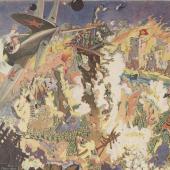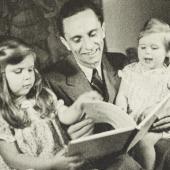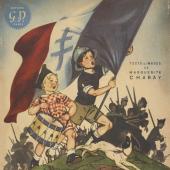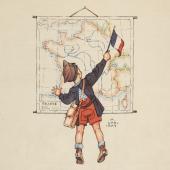-

Victor Dancette, La bête est morte! La guerre mondiale chez les animaux: images de Calvo
-

Roland Lennad, Les hommes verts
-

Marguerite Chabay, Les volontaires du général Larafale: texte & illustrations de Marguerite Chabay (1)
-

Marguerite Chabay, Les volontaires du général Larafale: texte & illustrations de Marguerite Chabay (2)
Humour and children’s books
Literature of the Liberation
Humour was a form of defiance and could only be published freely after the liberation of Paris. It took many forms ranging from ‘bandes dessinées’ (comic books) such as La bête est morte in two volumes, the first published in 1944 and the second in June 1945, in the hope that, ‘la Bête est bien morte’, and described as ‘Conçu sous l’occupation et réalisé dans la liberté’, to Roland Lennad’s book of savage irony in which he asks the question, ‘who are these people who could have done these terrible things?’ There were also collections of humorous stories containing jokes and stories told amongst family and friends which after the Liberation stopped being told and were quickly forgotten. Cartoons published in books by artists such as Jean Sennep contain some of the most open indictments of the complicity of the French during the Occupation. The colophon of Marguerite Chabay’s Les volontaires du général Larafale is typical of many children’s books, in celebrating the heroic achievement of the Liberation as France tried to unify and rebuild herself.